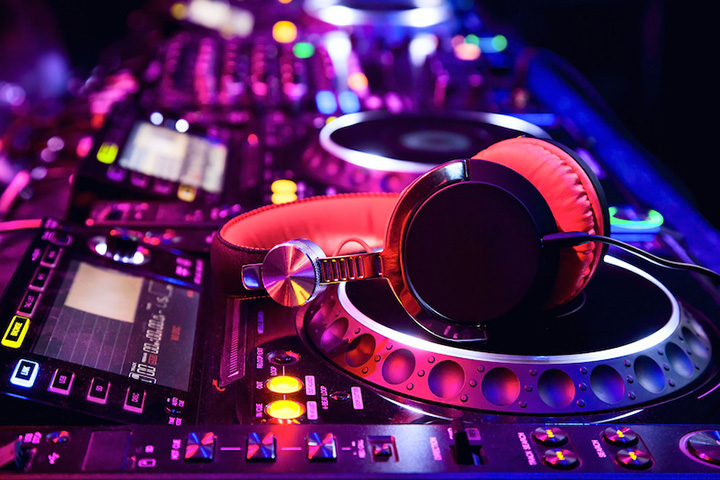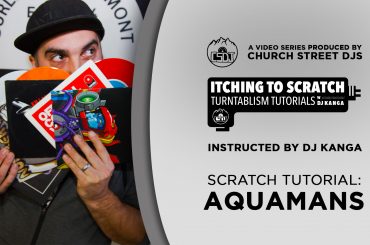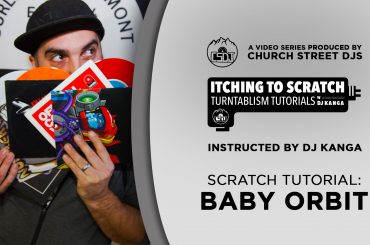One of the foundations of learning how to DJ a gig properly is to know how to read a crowd. It’s one of the most important skills a DJ can obtain. It is a skill that takes years to acquire and you never really, completely master it. It’s ever-changing and ever-evolving because each event you do is unique. So, sure, you base your decisions on past experiences, but you must have the wisdom to adapt.
I joke with my friends and family that I have reached a point in my tenure as a DJ that I’m not just a guy who plays records – I’m a sociologist with a wicked music library, and I know how to use it.
So, what works for me? I literally observe the entire room, at least what I can see of it. From front to back, side to side, and all in between. I cue in on people’s body language.
Are their toes tapping? Are the heads bobbing? When people move in their space, are they walking in cadence with the song I’m playing? Are people singing along to the song I’m playing?
Read More: Are you a real DJ? Take the 10-point checklist.
I take all of that into account, and reassess every 60 to 90 seconds. You always have to pay attention.
How do you rotate the dancefloor?
There are so many ways to accomplish this. The “simple” way is to change the BPM from low to high or vice versa. There are transition edits that can help you accomplish this. You can do cold stops/cold starts. You can cut/scratch records in or out. You can use the multitude of effects that are part of your DJ software or hardware.
Personally, I tend to play in the dance realm of music (124-130 BPM). As such, I can still turn over a floor and stay within a given BPM range. It just comes down to knowing your music and programming accordingly.
If you have your music programming down, you can use songs that may have the same BPM (range), but create a range of energy to rotate the floor. Just because you play five songs that live in the 127 BPM range doesn’t mean they are through-the-roof bangers.
I try to program mini sets. I don’t stay in one “area” too long. I try not to stick to two or three instrumental tracks, three to five female tracks, and three to five male tracks—something along those lines. You can’t keep the energy high or low all night. It’s like a rollercoaster. You want to have the experience of the big climb, big drop, some turns, some curves, and some loops throughout the course of the event. You can accomplish that within a BPM range or with radical BPM changes.
How do you choose the track with the correct energy level?
I look at my crowd, and I ask myself:
Where am I now?
Where do I want to go?
Where do they want to go?
Do I have a request that will fit in?
Is the floor ready for a new direction?
Are we still in build-up mode?
Are we at a plateau?
Are they ready for a “peak-hour” record?
I take all of those factors into account, and choose a record to mix.
How do you determine what songs would be a good choice to mix into (i.e. BPM, key, similar song structure)?
I take into account BPM and key. I don’t concern myself with song structure only because, with the remixes and edits I use, I know what structure the track is, so I’m good there. As previously mentioned, I look at my crowd, and I ask myself:
Where am I now?
Where do I want to go?
Where they want to go?
Do I have a request that will fit in?
Is the floor ready for a new direction?
Are we still in build-up mode?
Are we at a plateau?
Are they ready for a “peak-hour” record?
I’m also aware of what point of the night I’m in, so I try and choose accordingly.
Is mixing in key important?
I think it’s a personal decision. And that decision is predicated on the how you want to sound as a mixer. The short of it… mixing in key is important if you want your set to flow.
I feel it’s a safe assumption to make that, if you’re a mixing DJ, you want your mix and your transitions to sound on-point. It should be a smooth flow from start to end.
Allow me to say… while there are great software programs out there (like Mixed in Key 8.0) that do assist DJs in determining keys and which keys work together, DJs were mixing “in key” or harmoniously before any programs like these existed. Learning to choose the right record that harmoniously transitions from one to the next is a skill within itself.
If you want a smooth, continuous, melodic, and harmonious mix, you’re going to find yourself mixing in key in some form or another.
Should you mix longer than 32 bars? Is it necessary?
In my view, that depends on:
What songs you’re mixing.
What crowd you’re mixing to.
Is the event going to allow for those types of transitions?
If you’re a dance-music DJ (like myself), your proclivities will lean towards the long-form mix. This music lends itself towards mixing 32 – 64 bars, if you’d like. If you play a lot of Top-40 mainstream tracks or even urban music, the 32 – 64 bar transition isn’t really called for.
For me, I like long transitions. It’s how I grew up listening to the DJs in New York City. I really don’t know how to mix otherwise. I thrive in trying to ride that groove for 45, 60, 90, 120 seconds, if the tracks allow for it. Mind you, that’s not all the time. But 32 bars is pretty “standard,” and there’s nothing wrong with 16- or 8-bar transition, but I try and ride it.
Should you feel bad when you can’t mix requests back to back because of BPM?
I think this is a judgement call. If you’re being professional and doing your best to fulfill requests… no, I don’t think you should feel bad.
Let’s be real—we all have horror stories about requests. I will say that, by and large, 96-percent of working DJs should be in the mindset of taking requests. It’s part of the job. On the other hand, a request is just that… a request. A request isn’t a mandate or an ultimatum.
What’s the most we can cheat the BPM system?
Old-school thinking was to try not to go more than plus/minus 5-percent, but in the digital world, what can we really get away with?
If you attended the DJ Expo, you’d know the answer to this question… [grin]
Generally speaking, there are two rules: the 3-percent rule and the 6-percent rule.
With the 3-percent rule: if you keep your tempo plus/minus 3-percent, you will remain in the same key.
With the 6-percent rule: if you keep your tempo plus/minus 6-percent, you will change the key of the song you’re playing.
However, with DJ software and hardware in today’s high-tech world, you can radically change the tempo of a song, but not change the pitch. Generally, with Master Tempo, you can go as high as plus/minus 15-percent in tempo range and not significantly change the pitch.
What does your ear hear that says, “That will make a good mix…”?
For me it depends on the song(s) I’m working with. I trigger off the vocal, the piano line, the synth line, whatever strikes my fancy. Once I key in on that aspect, I try and find another record that will complement the first record. This is where remixes come in, because remixes give you extended parts that allow you to segue seamlessly from track to track.
In setting a cue point for a mix, what do you listen for?
For me, it’s song structure. I want to know how much of an intro I have before the hook of the first verse comes in. I want to know when the breakdown happens. I want to know when the buildup happens.
The important parts of the song/remix get a cue point. And if the mix allows for it, I’ll choose a loop point as well.
Is your next song based on current song and audience response?
As “in-the-moment” as I try to be with my set-programing, I do try and plan two or three songs ahead. Those songs that are on-deck may get played or not. It does depend on what direction the room turns. So I’m a bit more focused on how the crowd is reacting than just having Songs A, B, and C in order – and sticking to that order. I can’t tell you how many times I’ll be in the middle of Song B and realize, “Oh yeah, Song C isn’t going to fit – I gotta go dig for a better song.”
How do you “look ahead” for the next song to mix?
As previously mentioned, I look at my crowd, and I ask myself:
Where am I now?
Where do I want to go?
Where do they want to go?
Do I have a request that will fit in?
Is the floor ready for a new direction?
Are we still in build-up mode?
Are we at a plateau?
Are they ready for a “peak-hour” record?
The way I program, I’m very fluid. I don’t pre-plan any of my sets, never have. I play in the moment. Sure, I’ll do my homework before a gig. And if I find a track (or three) that I think is a banger, I’ll make a note that I want to slip that into the set. But, I remain open-minded and mercurial with my programing. It keeps me fresh, relevant, topical and open to instantaneous inspiration.
Not to be confused with the longtime MLB shortstop, Tony Fernandez is a longtime club/mobile DJ. Based in Richmond, Va., Fernandez grew up in NYC listening to DJs like Shep Pettibone, Jellybean Benitez and Tony Humphries. He’s been spinning since 1980.








